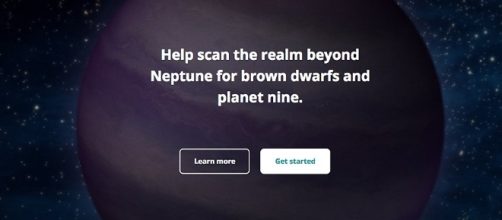NASA invites everyone passionate about astronomy to get involved in the search for planets and other cosmic objects located at the edge of our Solar System and the nearby interstellar Space, according to an article published by the American space agency.
New website for people passionate about astronomy
A new website -named "Backyard Worlds: Planet 9" enable anyone interested in astronomy to join the search for new planets, by analyzing short video clips made from the images taken within the mission of NASA called "Wide- field Infrared Survey Explorer" (WISE).
In these videos the gradual evolution in the sky of cosmic objects is highlighted.
Marc Kuchner, an astrophysicist at NASA's Space Center Goddard, in Greenbelt, Maryland explained that the distance between Neptune and the nearest star from the Sun -- Proxima Centauri -- is more than 4 light years, and a lot of this large space is still unexplored. Kuchner said that very little sunlight reaches so far so, in these conditions, even the largest objects from this region of space are very difficult to spot. The researcher explained that, if you look through infrared with the help of WISE, you may discover cosmic objects that might not have been seen otherwise.
The mission Near-Earth Object Wide-field Infrared Survey Explorer
Between the years 2010 and 2011 WISE has been scanning the whole sky and they have produced the most complete analysis of the edges of the solar system in the infrared spectrum. After completing its first mission, the project was stopped in 2011, but it was restored in 2013.
Then it received a mission to assist NASA in the search for cosmic objects close to Earth that could pose dangers to our planet - such as asteroids or comets. Then , the mission was renamed NEOWISE (Near-Earth Object Wide-field Infrared Survey Explorer).
Planet 9
The new website uses these information to search for potential undiscovered cosmic objects at the edges and beyond the edges of our Solar System.
In 2016 astronomers from Caltech, Pasadena, California proved that a group of very distant objects from our Solar System have some orbital characteristics which indicate that they might be influenced by the gravity of a planet which is still undetected. Scientists have named this planet "Planet 9". If Planet 9 - also called Planet X by other sources - exist, it could appear in the data collected by WISE.
More distant objects such as brown dwarfs, called failed Stars could also be discovered during this project.
How people could participate in the project
On the website called "Backyard Worlds: Planet 9", astronomical discoveries enthusiasts can examine millions "Flipbooks" - short animations which show the changes over the years in small regions of the sky.
The cosmic objects which will be identified by the participants will be studied by the team of professional astronomers and they will be considered a priority. Participants will receive credit for any breakthroughs in scientific studies that will accompany this project

